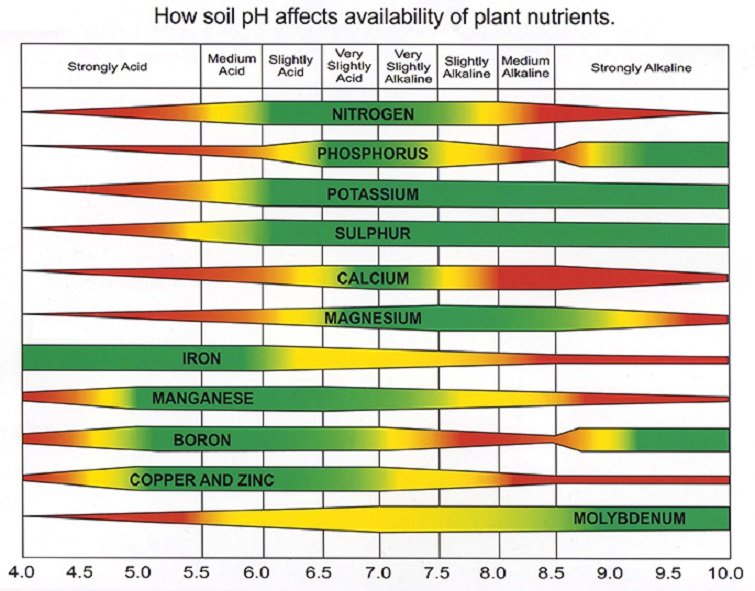Cannabis NPK
Autoflower & Feminized Cannabis NPK
Cannabis plants, like all living things, need food to grow. For most people this involves soil, water and fertilizer or plant food. But growing cannabis is not as simple as watering and adding any old fertilizer, at least not if you want to grow good cannabis. Understanding NPK ratios and when an autoflowering or feminized cannabis plant requires different nutrients is what separates a good crop from a fantastic crop.
What is NPK?
NPK are the chemical symbols for Nitrogen (N), Phosphorus (P) & Potassium (K). These three elements are found in almost every type of soil sold are the amounts are normally listed on the bag or bottle under the NPK designation. For example, if a bag of soil is 15-18-20, it is referring to the ratio of NPK. The same is true on a bottle of fertilizer. The ratio of NPK will normally be listed somewhere on the label.
Nitrogen (N) : Nitrogen helps in making proteins that are used for foliage growth. Excessive Nitrogen will cause fast growth but poor flowering, . A Nitrogen deficiency causes stunted growth.
Phosphorus (P) : Phosphorus is key to strong root growth, flower development and larger seeds. An excess of Phosphorus causes poor growth and bleached or yellow leaves. A phosphorus deficiency causes leaves to die.
Potassium (K) : Potassium is important for overall plant health and development of flowers. Excess Potassium can cause (N) and (P) uptake to be blocked which would then lead to (N) & (P) deficiencies and issues. Potassium deficiencies lead to disease and overall poor plant health.
There are other nutrients and compounds that a plant needs, but they are often required in tiny amounts. Calcium, Magnesium, & Iron are needed by plants, but in minuscule amounts compared to NPK.
Related Articles:
PPM Levels for Cannabis Plants
Why is Cannabis NPK Important?
Cannabis, like all plants, has a ratio of NPK that helps it grow strong and healthy. Just like people, different plants prefer different diets. And just like people, the preferred diet changes as the plant ages. By understanding cannabis NPK, you can adjust the feed to produce a healthier, higher yielding plant.
Recognizing that the needs of the cannabis plant changes over the different stages of its life is really the key to growing the best flowers. The idea is to feed the plant the food it needs at that time in its life. If you were to feed a cannabis plant the same food mix for its entire existence you will probably grow something, maybe even something decent, but you would never grow the highest quality cannabis.
CANNABIS NPK CHART
Seedlings 2-1-2
Early Vegetative 4-2-3
Vegetative 10-5-7
Vegetative to Flowering Cycle Change 7-7-7
Early Flowering 5-10-7
Mid-Flowering 6-15-10
Late Flowering 4-10-7
FLUSH: ONLY WATER

Seedling NPK 2-1-2
A seedling is stage between germination and the first 5 bladed leaves, typically found at Node 3. A node is simply a pair of new branches/leaves. Node 1 normally has single bladed leaves. Node 2 has 3 bladed leaves. This sequence continues up to 7, 9, 11, and even 13 bladed leaves. The key is that seedling stage ends after node 3 and the pant enters early vegetative stage.
A seedling requires very little feeding. Starting at ¼ strength of whatever is recommended and only every 2nd or 3rd watering. Most seedlings should be able to draw from the soil whatever nutrients they need. Adding a little Root Juice to help the roots grow is always a good idea.
Early Vegetative NPK 4-2-3
Once the cannabis plant has 5 bladed leaves it enters early vegetative stage. Planted clones also are considered to be in early vegetative stage. Cannabis plants in this stage can move up to a mild feeding, about ½ of the recommended amount in addition to Root Juice.
Vegetation Stage NPK 10-5-7
As the plant hits nodes 5 and 6, the plant is in vegetative stage. Cannabis plants want a lot of Nitrogen at this stage to help grow strong and healthy. Root Juice can be continue to be added until late vegetative stage. At the end of the vegetative stage, Root Juice is no longer needed, and the plant should be prepared for the changeover to flowering. Start to reduce Nitrogen levels at this point.
Change From Vegetative to Flowering NPK 7-7-7
Reduce the nitrogen and increase phosphorus and potassium to create a balanced NPK. This can be done by mixing grow and bloom formulas. The goal is to make a stress free transition from vegetative to flowering stage. Radically changing a cannabis plants’ feed can induce stress on the plant and any stress normally stunts growth.
Early Flowering NPK 5-10-7
Nitrogen is still being reduced. Potassium is being held firm while Phosphorus is still increasing. Cannabis plants want and need Phosphorus to grow flowers. The early flowering phase is roughly 2 -3 weeks for feminized plants, but only 1-2 weeks for autoflowers. This early flowering stage is accompanied by the plant stretching, or growing taller quickly. Once the plant stops growing taller, the stretch and early flowering stage is completed. Flowers should be entirely white pistils.
Mid Flowering NPK 6-13-14
Mid flowering stage begins once the stretch is complete. This is the most crucial time for feeding in order to create big, dense flowers and buds. Cannabis plants want lots of Phosphorus and Potassium in this stage. A very popular additive is PK 13-14, which is high doses of Phosphorus and Potassium with no Nitrogen in the solution at all. The plants still need Nitrogen so don’t forsake it completely. However the PK 13-14 additives allows you to boost the PK ratios as it is difficult to find over the counter fertilizer with very high concentrations of Phosphorus and Potassium.
Mid flowering stage ends once pistils are beginning to turn brown/red. Mid flowering is about 3-4 weeks in feminized plants and 2-3 weeks in autoflowers.
Late Flowering NPK 4-10-7
As the pistils start to change to a higher ratio of red/brown and fold over, the cannabis plant is entering late flowering stage. It is time to reduce all NPK and start to wean the plant off the food. As the ratio of brown pistils start to approach 60%-70%, the cannabis flowering stage is beginning to come to an end.
Late flowering lasts 2-3 weeks in feminized plants and 1-2 weeks in autoflowers.
FLUSH – ONLY WATER
The final stage is a flush. We want to get all the chemicals out of the plant to improve the taste and quality of the smoke. Thus for the final week, the plants get only water. This is true for both feminized and autoflowering cannabis plants.
After a week of flushing, the plants should be given no more water. After 4-5 days of drying out, leaves the plants in the dark for 24-48 hours before cutting it down. This will help rid the plant of chlorophyll and will prompt the plants to produce resin. This final drying out and dark stage is what helps the flowers turn into nice, dense sticky buds.
NPK RATIOS
More important than trying to follow this NPK guide perfectly is to recognize the key is in the ratios between NPK than the numerical amount(ie 7-7-7). Keeping the correct ratios is more important than the concentration. So for the change over stage, feeding 5-5-5 is perfectly fine. It is not the recommended 7-7-7 but the ratios between NPK are the same. However you would not want to feed the plant 9-5-9 as the ratios between N, P, K are entirely different when compared to 7-7-7 or 5-5-5/
Very simply, during vegetative, Phosphorus should be about 50% of Nitrogen, while Potassium is about 65% of Nitrogen. During flowering, Phosphorus is the main element, while Nitrogen is about 50% of Phosphorus, and Potassium is about 65% of Phosphorus (with the exception of mid flowering when it is boosted to be about equal to Phosphorus).
The key here is to recognize Potassium is always about 65% of the main element, Nitrogen during vegetative and Phosphorus during flowering. Also that the “weakest” element is always about 50% of the main element. Thus the correct ratios look something like this:
Vegetative NPK – Nitrogen is the main element.
N = 1
P = 1/2 N
K = 2/3 N
Flowering NPK – Phosphorus is the main element
P = 1
N = 1/2 P
K = 2/3 P
With the above Cannabis NPK Chart you should be well on your way to growing healthy, strong and high yielding cannabis plants. With a bit of trial and error, you should be able to provide the feed your cannabis plants want, when they want it. The end result of good feeding is big, fat, sticky, dense buds which is the goal for every grower.

